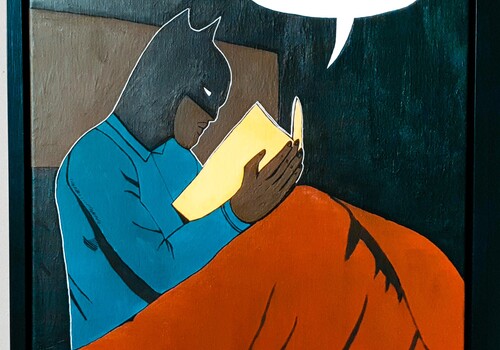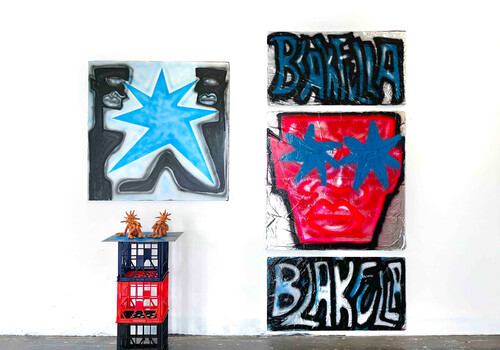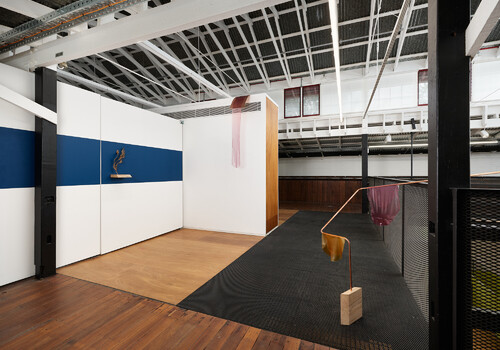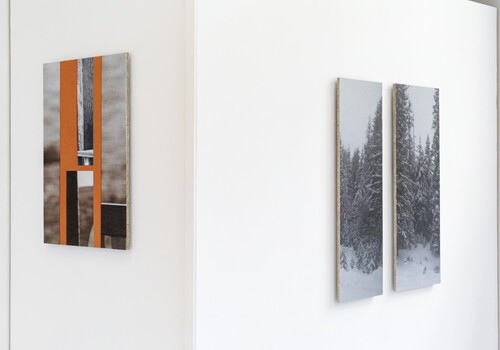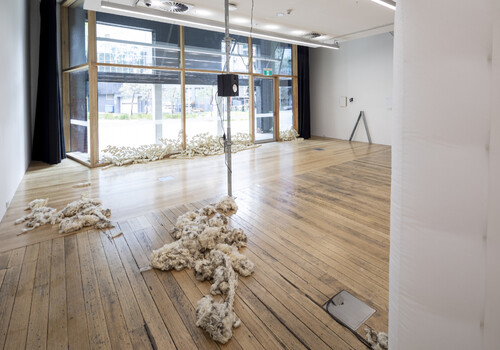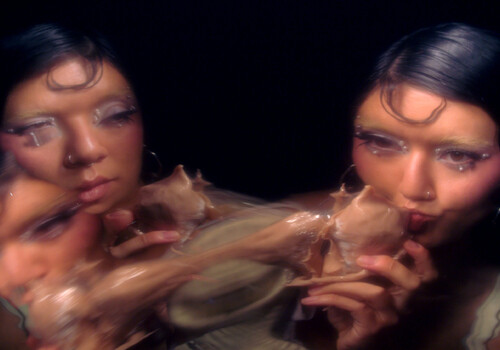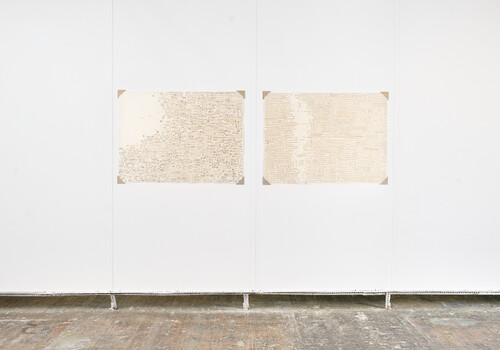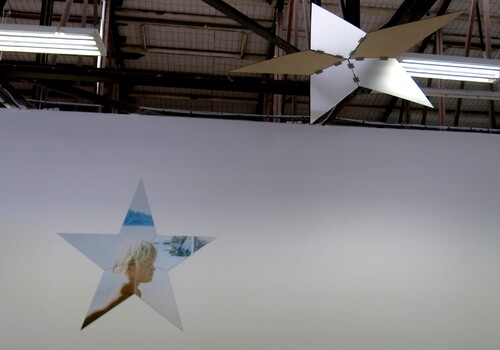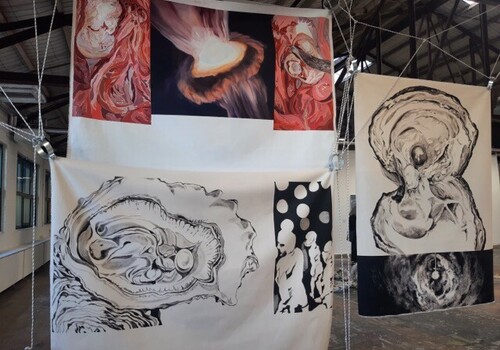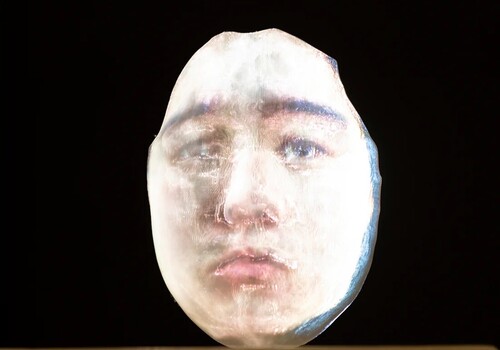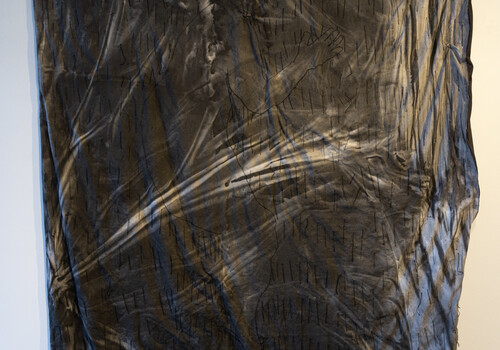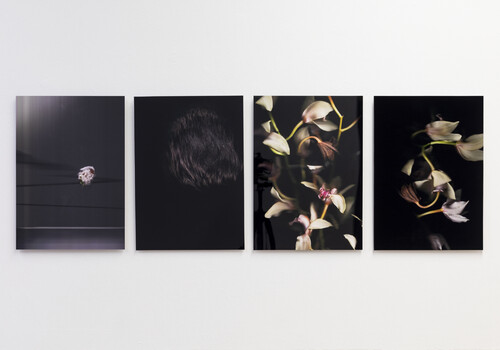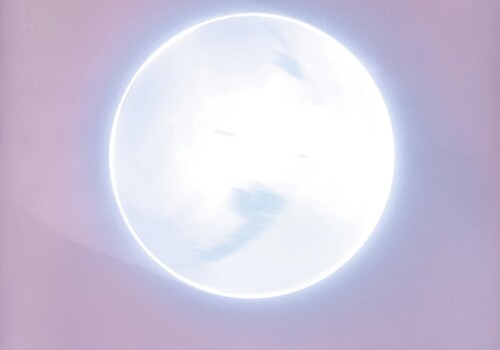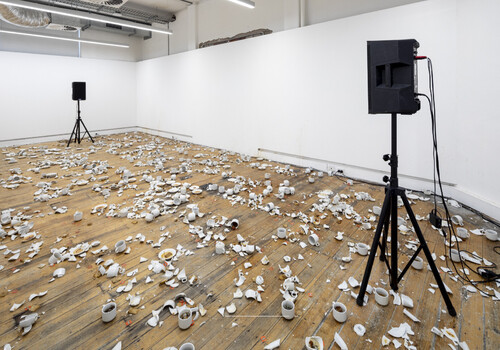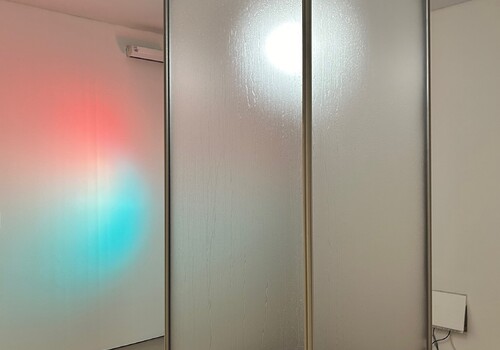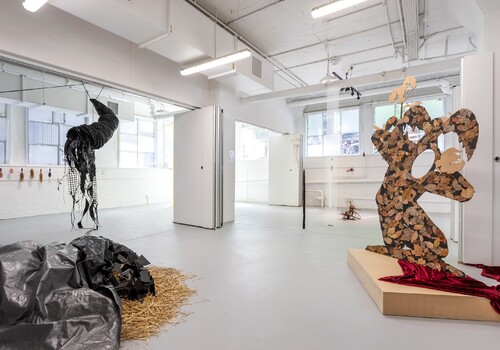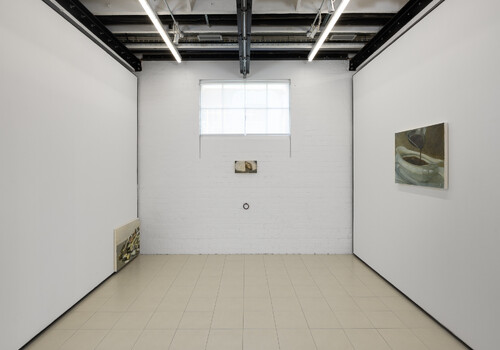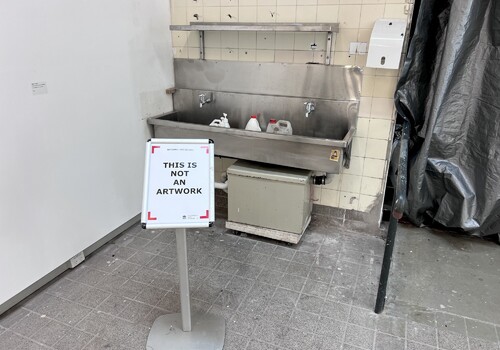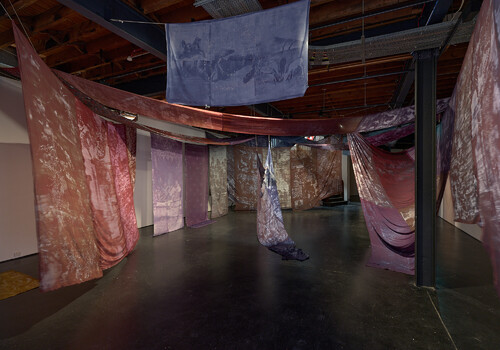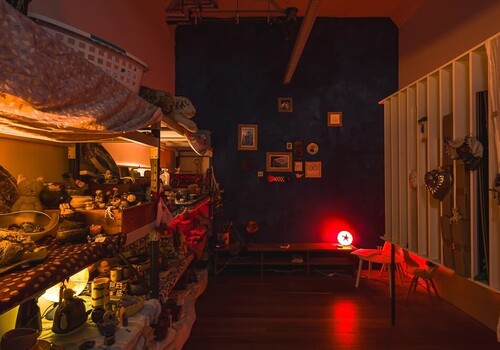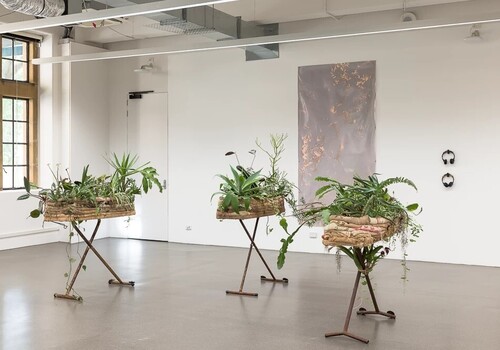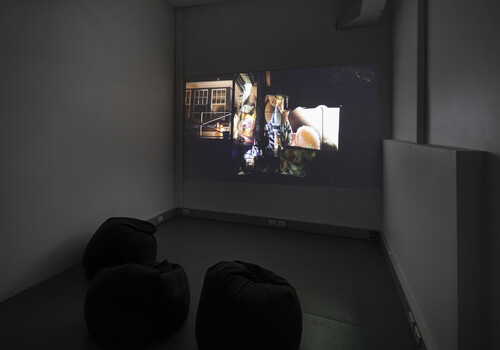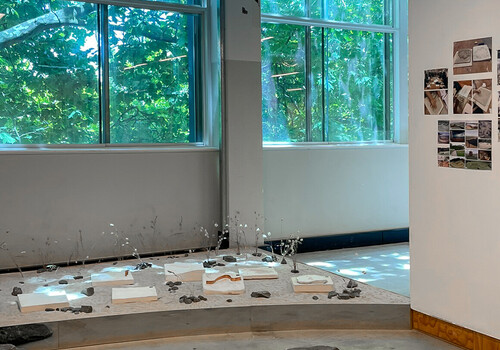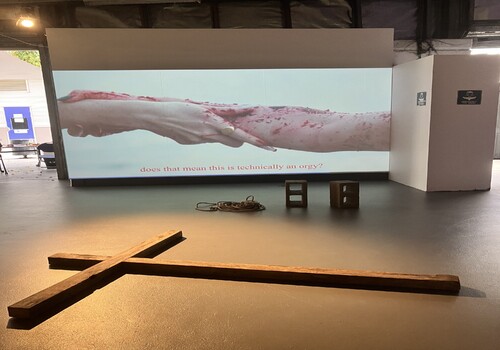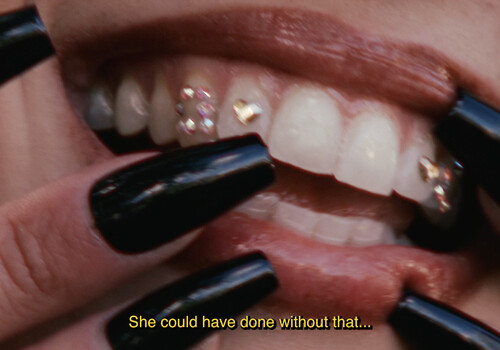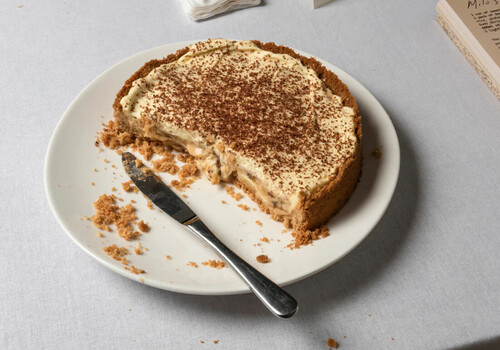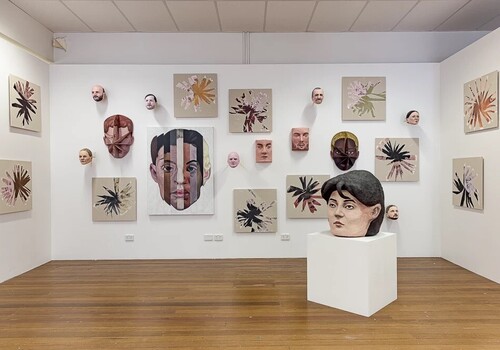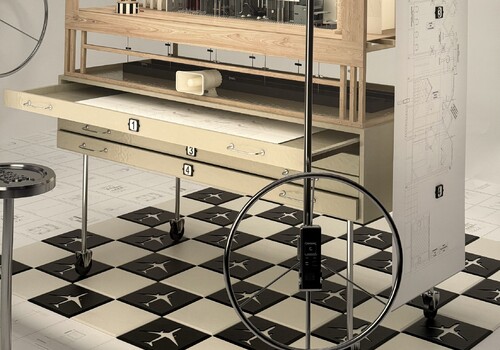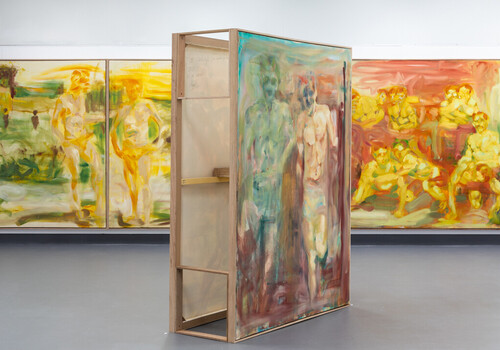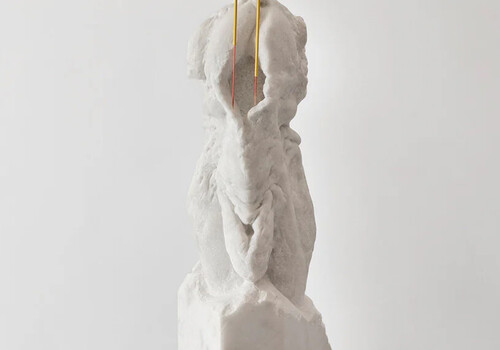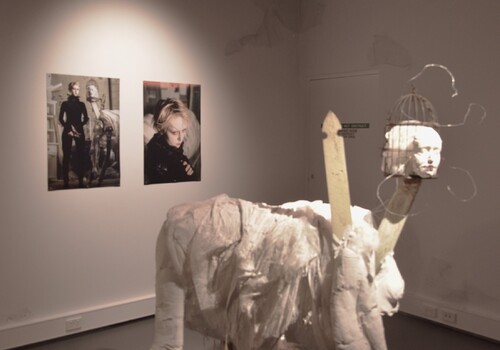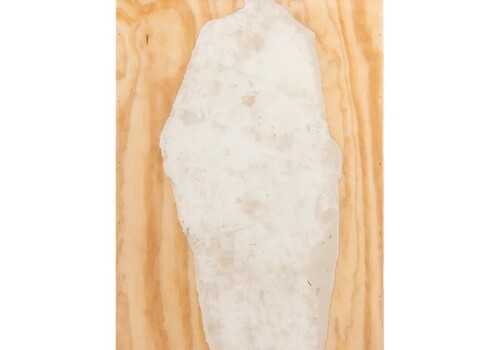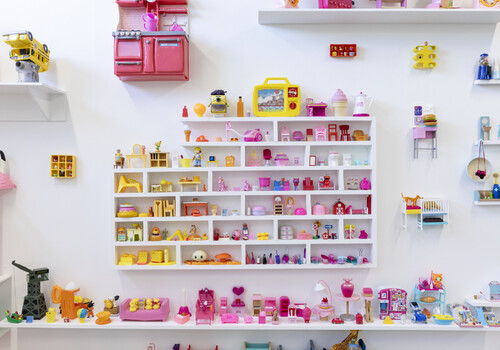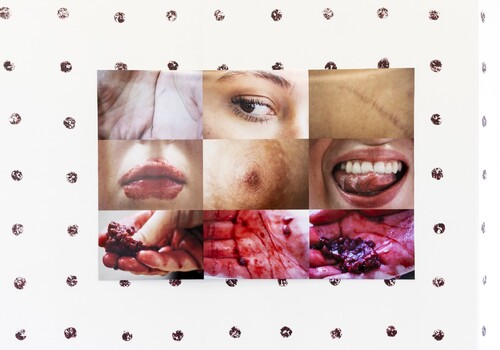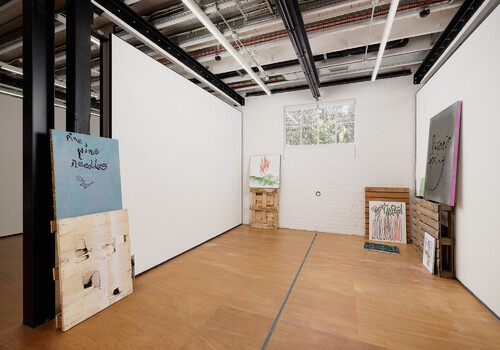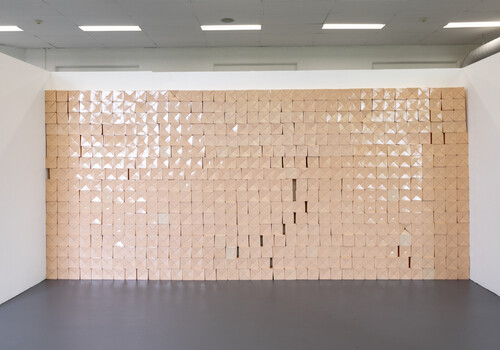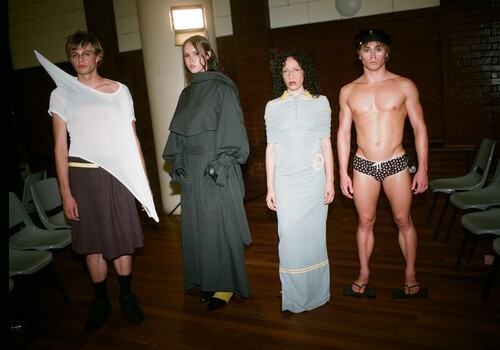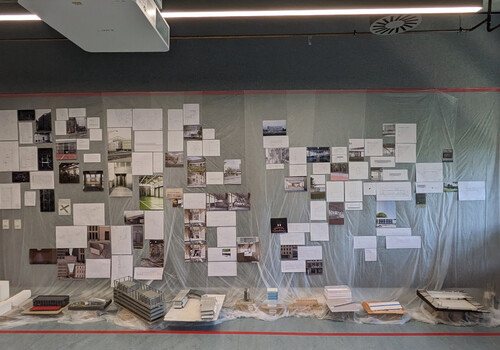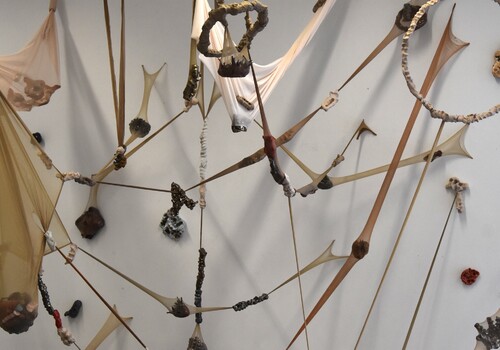Masters of Art, Bachelor of Art (Fine Art) (Honours), RMIT
By Lucy Gordon
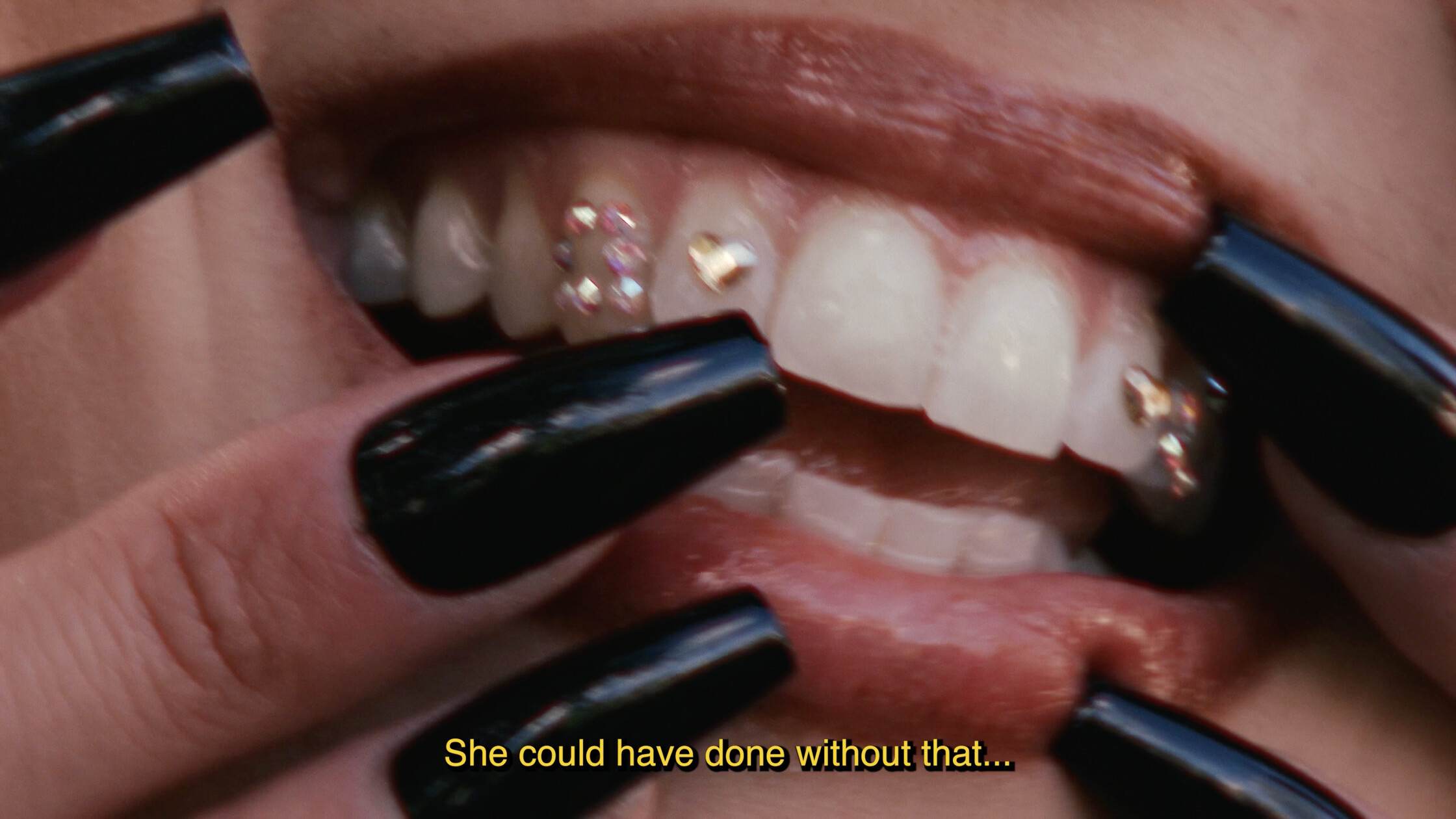
Tanya Cubric, Alina, Olena, Lana and Jana, 2023, single-channel video and installation. Photo: Klari Agar.
Prior to visiting RMIT’s grad show, I knew only one reference that combined high glamour with dog shit. After viewing Tanya Cubric’s 13-minute film, Alina, Olena, Lana and Jana, I had acquired a second. The sound of Hall and Oates’s classic—“Maneater”—beckoned me from a dark, curtained room. Upon entering, a vision of black spandex and leather emerged, cutting the silhouette of Grease’s Sandy, à la “tell me about it stud.” Here shone Cubric’s first siren of the screen, Alina. Crawling in comical seduction along a gravelled park path, Alina is the pantheress no man can tame. The kind of gal that takes no shit. When she sees shit, in this case, dog shit, she squashes it with her open-toed diamante sandal with the confidence of Divine’s Babs Johnson and walks off into the distance.
Alina’s defiant prowess in the face of the unknown is but one of four alternate endings. Cubric reprises three other highly stereotyped and cruelly punished Eastern European women characters she once played for television, to liberate them from the tragic fates they suffered in the original productions. These are their redemption arcs, of sorts. Olena dances on the car she was thrown from great heights on to, Lana frolics about a men-free, Amazon worker-free heaven, and, like all great final girls, Jana relishes her own blood-soaked body after surviving the whole ordeal.
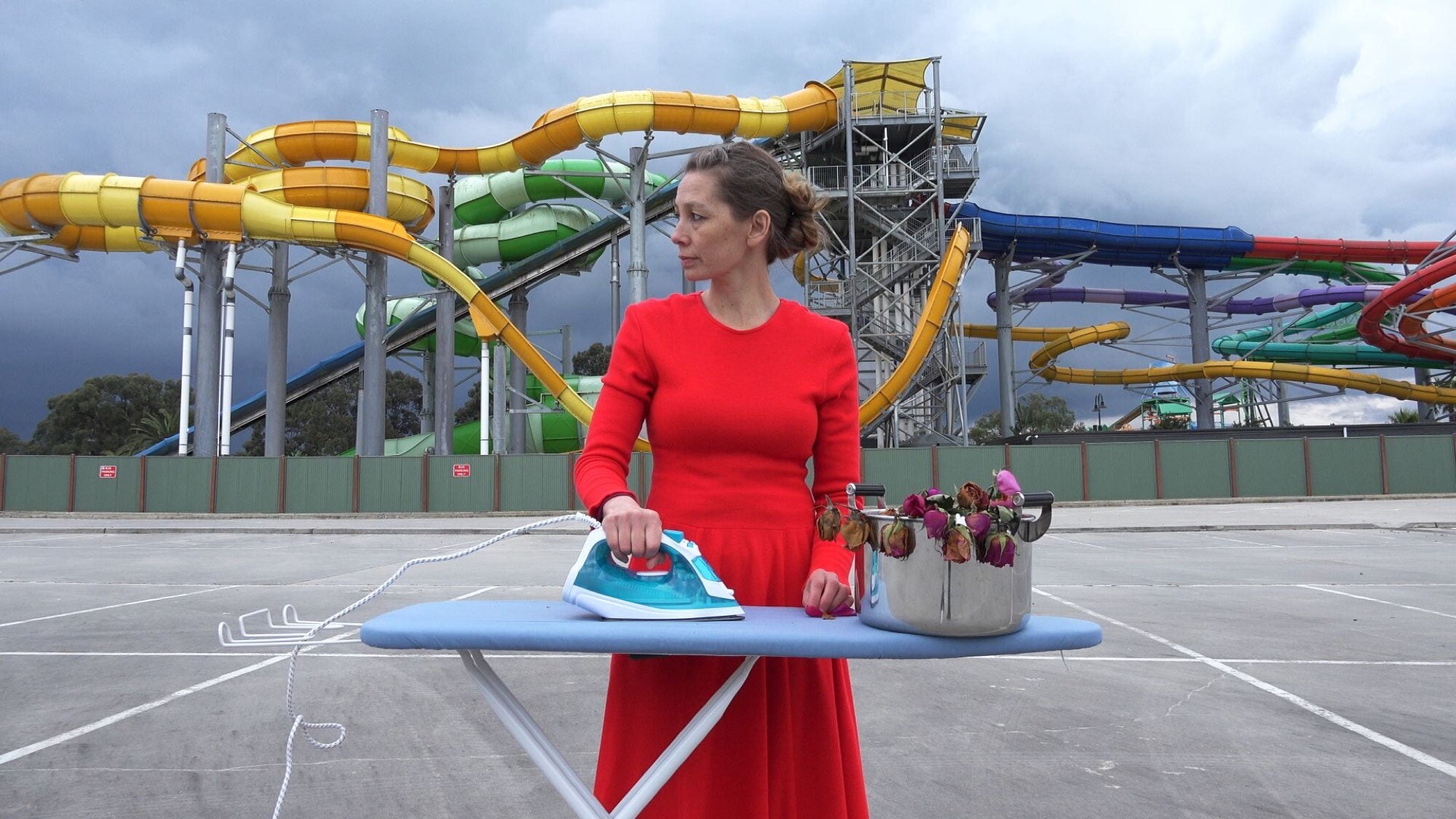
Mei Wah Williams, Substantial and Significant: Changeover, 2024, video still.
This sense of liberation sharply contrasts with the melancholic atmosphere of Fine Art Honours student Mei Wah Williams’ multimedia installation, Substantial and Significant: Changeover. In this domestic tableau, Williams herself is dedicated to the absurd task of ironing individual rose petals. Set in the Gumbuya World Theme Park carpark, the overcast sky looks ready to pour. The scene reads like a modern folk tale. The authoritarian presence of the tower ensures she remains till the task’s completion. Williams’ installation draws inspiration from the Family Court System, specifically arrangements between co-parents regarding child custody and visitation. One could easily read the sheer size of the tower and water slides as an executive force, a legal stressor that adds to the usual pressures of looking after a child. They loom large behind you and yet you may never return this critical gaze. The juxtaposition of the carefree spectacle of child’s play with the mundane drudgery of domestic labour highlights the covert work that sustains the illusion of fun.
In the floor space between the central video installation on the back wall and the room’s entrance, Williams lays ornaments fashioned from family legal documents in dishwashing racks, and projects the video work Precarious Imbalance onto tilted laundry baskets. Being an artist and caregiving are presented in a constant state of counteraction. Like Williams, we are fumbling about in this darkened space without guidance or instruction, careful to watch our step, lest it all come crashing down around us.
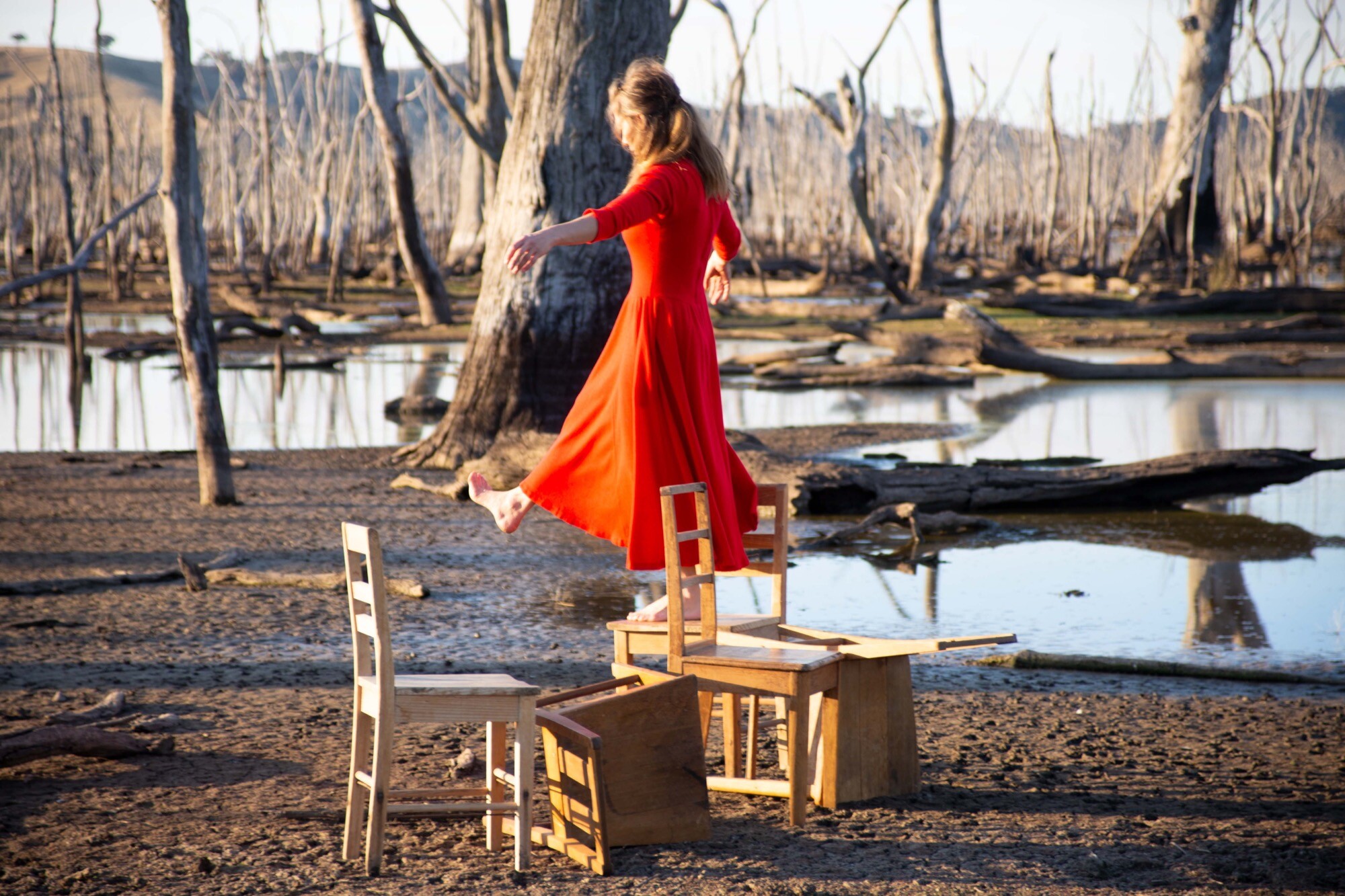
Mei Wah Williams, Precarious Imbalance, 2024, performance documentation. Photo: Liam Clancy
Cubric’s alternative narratives of liberation in tandem with Williams’ condemnation of maternal labour underlines the insidious nature of gender-based discrimination and violence across seemingly disparate terrains. The protests that occurred during the RMIT grad show saw some students removing their work and dedicating their studio spaces to Isla Bell, in commemoration of her life. In VOW: The Pedestal Project International Women’s Day, a work by Master of Art in Public Space student Catherine Magill, performers stood atop milk crates in memory of the 94 Australian women killed by femicide in 2024, adorned with this harrowing statistic. As I write this, that number has risen to 97.
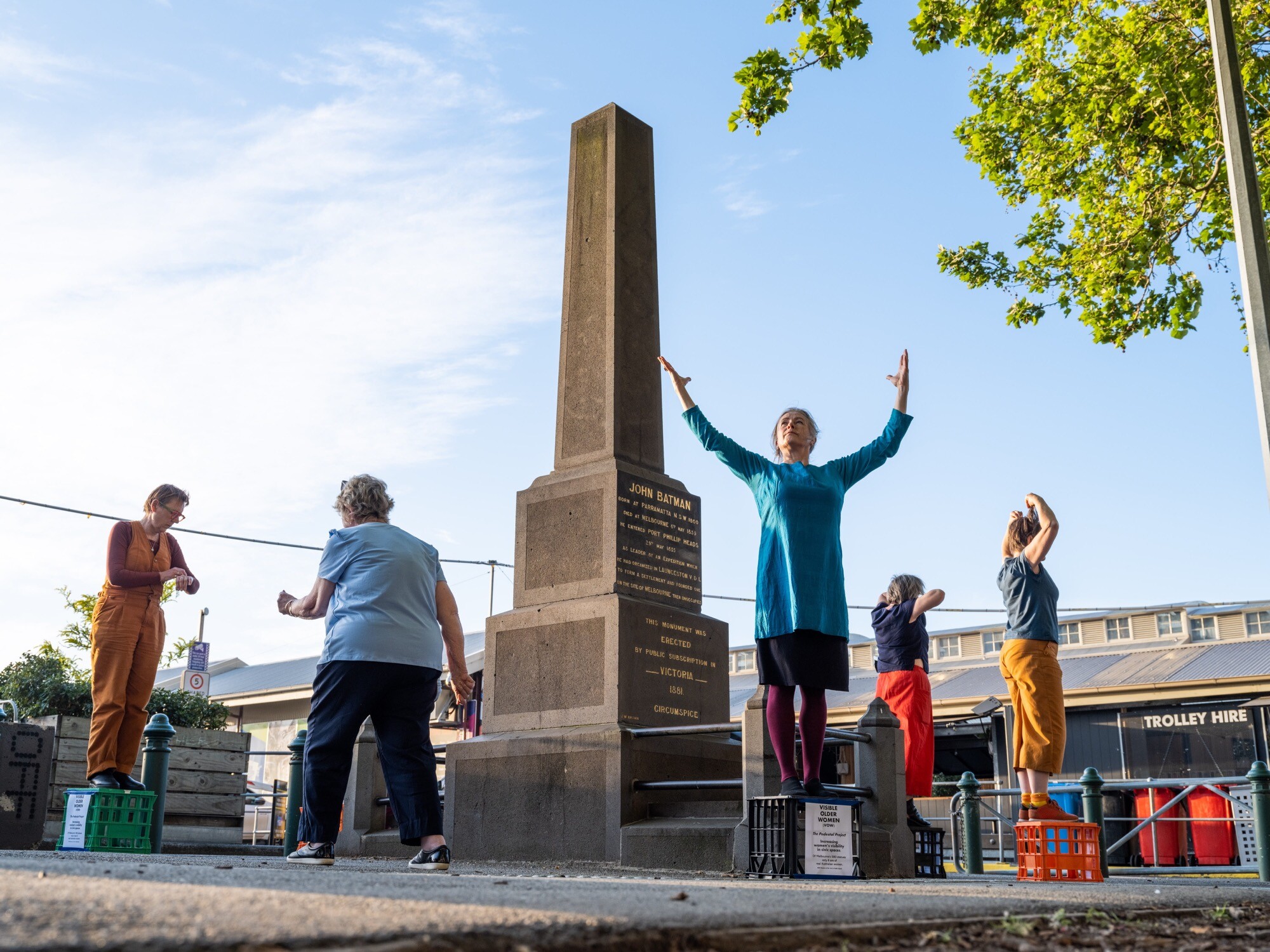
Catherine Magill, VOW: The Pedestal Project, Queen Victoria Market, October 2024. Performers left to right: Vivienne Tate, Anne Shotter, Lindy Ferguson, Catherine Magill, Lee Allen. Photo: Mischa Baka
Lucy Gordon is a writer based in Naarm. She is currently undertaking a Bachelor of Art History and Curating at Monash University.
